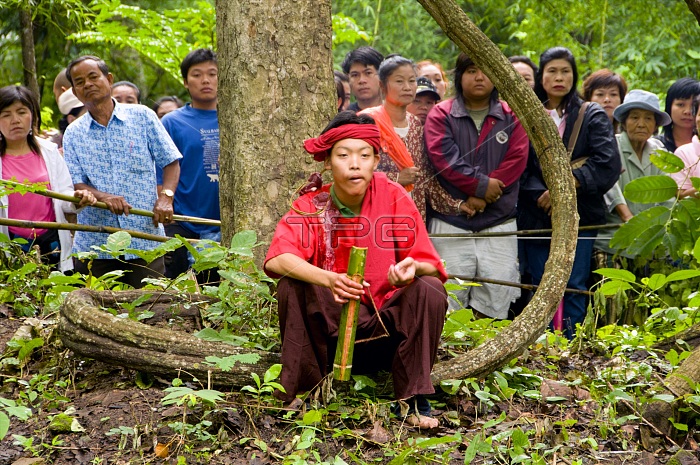
Every late May or June, near the beginning of the Rainy Season, two little-known but archaic rituals are held in the environs of Chiang Mai, northern Thailand. These are the related Pu Sae and Ya Sae ceremonies, which are believed to pre-date the introduction of Buddhism to Northern Thailand. The traditions which they encompass similarly pre-date Thai and even Mon settlement in the area, and are associated with the Lawa, the earliest-known inhabitants of Chiang Mai. According to tradition, Pu Sae and Ya Sae are the guardian spirits of Chiang Mai. Together with their son, Sudeva Rikshi, they wander the slopes of Doi Suthep (Suthep Mountain), where they are attended by six lesser spirits. Although they are now thought of as 'giants', in their lifetimes Pu Sae and Ya Sae were almost certainly Lawa, the indigenous inhabitants of the region before the establishment of the Mon Kingdom of Haripunjaya (Lamphun), and whilst the Thai still lived mainly in South China. Legend has it that Pu Sae, Ya Sae and their son were cannibals, who took great delight in human flesh. Once, when the Buddha was travelling in these regions, he passed through the area inhabited by the three cannibals. The fierce family followed his trail, intending to make a meal of him. Whilst meditating at Ban Panghai, Tambon Saluang, Mae Rim, the Buddha became aware of their intentions, and stamped on a boulder which to this day bears his footprint, and has become a shrine.
| px | px | dpi | = | cm | x | cm | = | MB |
Details
Creative#:
TOP27180417
Source:
達志影像
Authorization Type:
RM
Release Information:
須由TPG 完整授權
Model Release:
No
Property Release:
No
Right to Privacy:
No
Same folder images:

 Loading
Loading